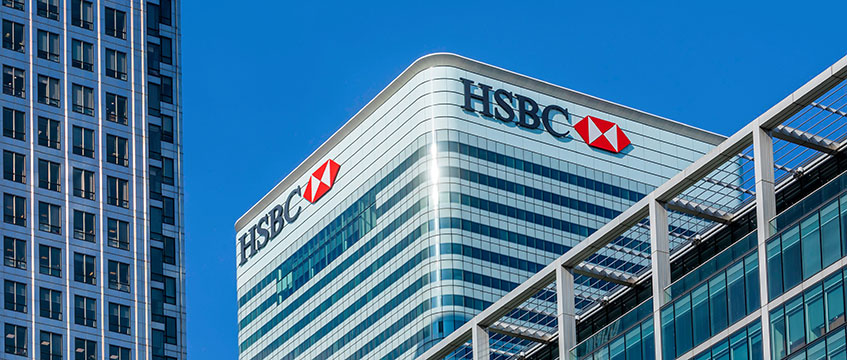The departure of HSBC from Canary Wharf will force landlords in London’s Docklands to make long-overdue changes to their stock and rethink the area’s image, according to real estate professionals.
HSBC announced this week that it will leave its home in the Docklands, where it has occupied around 1m sq ft in the Qatar Investment Authority’s 8 Canada Square, E14, for the past two decades, for a new HQ in the City at the Panorama building in St Paul’s, EC1.
The news was seen by industry figures as a vote of confidence in the City of London, but also a blow for Canary Wharf by some who worried about what the exit of the banking giant will mean for the area’s status as a financial district.
HSBC is not alone in deciding to move from Canary Wharf to the City in recent months. Law firm Clifford Chance confirmed that it would prelet the entirety of 2 Aldermanbury Square, EC2, from GPE in November 2022, leaving its home at 10 Upper Bank Street, E14, in 2028.
Some see it as a chance to revamp older offices in the area. “It does give the Canary Wharf estate an opportunity to reinvent itself,” said Shaun Dawson, head of insights at DeVono.
“I can’t express enough that the Docklands has not had its day. It’s just that it is in its infancy of change. It requires some of the big occupiers to leave or at least change the amount of space that they are taking to force Canary Wharf [as an] estate to evolve a little in order to attract businesses… Those offices were built for a different kind of occupier.”
Industry professionals did not believe HSBC’s move was a death knell for Canary Wharf or the Docklands, but acknowledged that it marked a challenging pinch point.
A process of reinvention is already under way, according to Dawson, who said buildings like YY London were evidence of “a real push by Canary Wharf Group to reinvent itself and make the buildings more approachable and also relevant to the modern occupier”. Canary Wharf Group’s drive to attract life sciences companies through a development tie-up with Kadans Science Partner shows an eagerness to break away from its historic reliance on banks and asset managers as anchor tenants.
Nonetheless, some said companies could eventually be wooed back once changes are made. As rents rise for prime office space in the City and a constrained pipeline causes costs to climb, occupiers looking for “good quality, new or refitted space with big floorplates and good location that is environmentally compliant” will find few options, said Michael Pain, head of tenant rep at Carter Jonas.
This could send “footloose City occupiers” back to Canary Wharf, where rents are more attractive and floorplates can accommodate a range of requirements.
“I know they have had a bit of a torrid time with Clifford Chance going and now HSBC, but in the medium term, I am quite sure that it will improve [as new developments become available] because choice is becoming increasingly limited in the City in the short term,” said Pain.
Where there is risk of obsolescence, there is opportunity in equal measure for tenants who could be looking to Canary Wharf as an economical foothold for office space. The same could be true for educational occupiers looking to graduate to the tower blocks of the Docklands.
“Canary Wharf offers interesting opportunities,” said Pain. “Number one, a lot more choice. Number two, a lot less cost and, number three, arguably, if you’re on the upper floors of the tower buildings there, you’ve got some cracking views.”
But this may not be enough to earn the commute for some occupiers who, Pain said, “don’t want to run the risk of staff taking a negative view of moving to Canary Wharf because it adds another five or 10 minutes onto their commute”. Overcoming this “psychological barrier” is a “difficult one to square”.
The financial sector still accounted for 62% of take-up in Docklands last year and remains the primary occupier type in the area. This also indicates that there is a smaller range of occupiers drawn to the Docklands than other submarkets around the capital.
In comparison, finance accounted for 55% of occupiers in the City and 13% in the West End.
The move by HSBC out of Canary Wharf in 2027, says as much about the boom in City leasing as it does about the Docklands.
Charles Begley, chief executive at the City Property Association, said there was a “palpable sense of optimism about the City at the moment, which HSBC’s decision will serve to further reinforce”. This is driven by the City of London Corporation’s City Plan 2040, which is designed to “reassert the Square Mile as a dynamic global city for both work and pleasure post pandemic”.
Begley attributed this to “significant investment by the City Corporation and private sector”, which he said was transforming the City “into a more welcoming and vibrant business district” that would continue to attract the best talent.
To send feedback, e-mail chante.bohitige@eg.co.uk or tweet @bohitige











